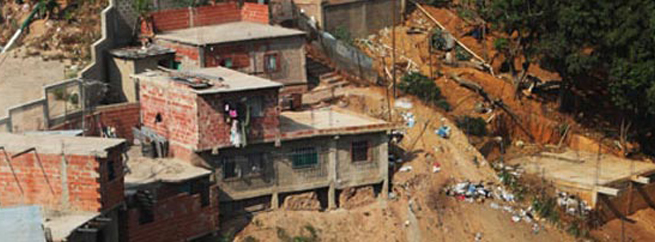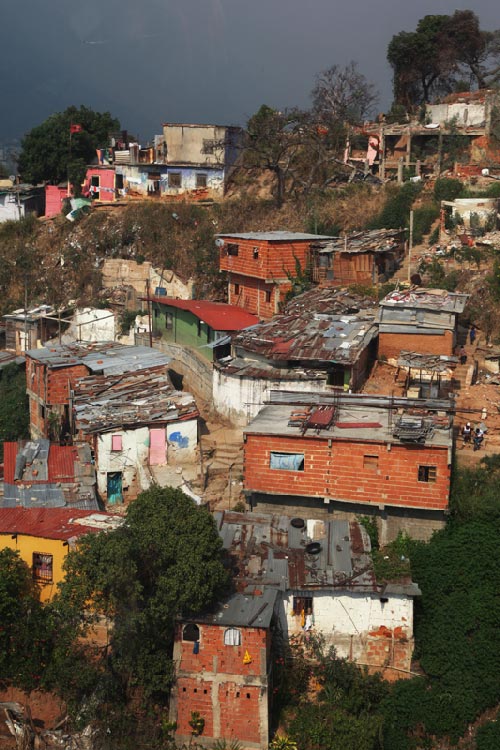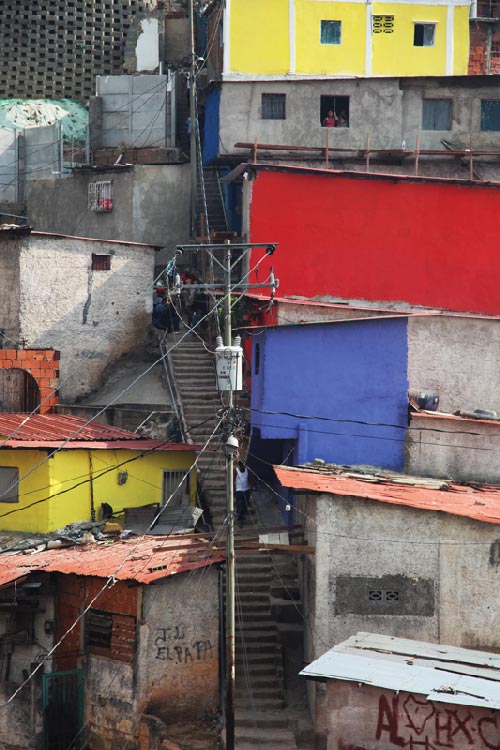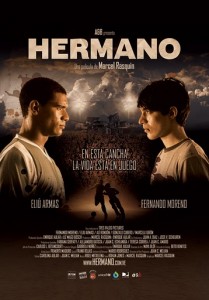
Hermano – a review of the slums
10 January, 2011Stephanie Kennedy, Sounds and Colours Venezuelan correspondent, takes a close look at life in Caracas’ slums, reacting to both the consequences of recent bad weather, and the release of Hermano, a new feature film set in the area.
The recent rainfalls to have hit Venezuela, as well as its neighbour Colombia, have been devastating, with both countries now in a state of emergency as thousands have been left homeless. The National Guard and the army, along with countless other civil servants are now operating to appease the damage, whilst schools and other governmental institutions have opened up as shelters. In Venezuela, 37 deaths, 136,000 people without homes and many still missing, draw an alarming picture.

Those most affected have been generally the poor, but more specifically those living in the slums, the make-shift houses that lie precariously on the dangerous slopes that surround the country’s capital, Caracas. The tempestuous weather to have swept through the country means that many have had to come down to the city in search of refuge, with the slums lacking adequate infrastructure to withstand such storms. Tin roofs have collapsed and been turned into tombs whilst the sloping land has caused avalanches and the loss of entire communities. Firemen and other rescue workers on ascension to the populated hills were met with reports of missing people and families torn by heartbreak and loss. The president Hugo Chavez visited, the radio eagerly following him as he spoke with the people. One particular elderly woman stubbornly refusing to go to a city shelter encountered the president and explained how she had to look after her animals, that she couldn’t leave behind her chickens and geese. Because, she asked, once down in the city what would happen to her? What would happen to the life she had made for herself?
The slum, or el barrio, although visible from most angles of the city, is an area that seems to have escaped adequate attention from the government and town councils. Although today there appears a growing consideration for the slums, most notably a cable-lift extension of the metro system that escalates heights previously inaccessible by other modes of transport, they continue to be seen as external, dangerous and to a law of their own. As a result, although geographically part of Caracas, they have transformed into their own cities with their own cultural norms and social rules. Newspapers and popular hysteria portray the barrio as a hot bed for crime and disorder, and in effect, the more isolated the place becomes, the more chance alternative authorities will take over. “The barrio is a place for the malandro”, which means criminal in Venezuelan dialect. Maybe, but if the police do not enter the area, then it will be the malandro who will interpret questions of order and security.

The film Hermano by Marcel Rasquin is one of Venezuela’s first and greatest cinematic attempts so far to portray life in the slums. It narrates the tale of two young brothers who dream of becoming professional football players. Daniel, played by Fernando Moreno, having been found as a baby amongst the sprawling rubbish of the city, is taken in by a young girl and her four year old son Julio, played by Eliu Armas, and both grow up to become inseparable. Whilst Daniel is an exceptional striker and Julio an innate leader as captain for their local football team of the slum La Ceniza, the film follows their aspirations to play for Caracas against a backdrop of poverty and struggle. When their mother is accidentally killed in a shooting, their lives suddenly change and the reaction of both differ as the barrio comes to intervene in dreams they had hoped to be a channel of escape.
 It is a heartbreaking story beautifully shot in the hills of the La Vega and Petare slums, from which the valley of Caracas can be seen below, glistening in its wealth in comparison to the shabby conditions of La Ceniza. The isolation suffered by the people of the slums is a subtle play on how the boys feel when they go into Caracas and how the death of their mother is an issue to be dealt with amongst a fraternity of La Ceniza rather than with the help of outsiders. There are scenes of violence but also of love and tender adolescent relationships, all coming to present a reality as complex and as humane as the slums of Caracas really are.
It is a heartbreaking story beautifully shot in the hills of the La Vega and Petare slums, from which the valley of Caracas can be seen below, glistening in its wealth in comparison to the shabby conditions of La Ceniza. The isolation suffered by the people of the slums is a subtle play on how the boys feel when they go into Caracas and how the death of their mother is an issue to be dealt with amongst a fraternity of La Ceniza rather than with the help of outsiders. There are scenes of violence but also of love and tender adolescent relationships, all coming to present a reality as complex and as humane as the slums of Caracas really are.
Today, whilst most now are without homes and sharing bunk beds in accommodated school halls, the future of the people of the slums depends much on how fast and how efficiently the government and other local authorities will act in the following year. The greatest challenge is the construction of thousands of new homes in a densely populated valley that otherwise had ostracised these very same people. What films like “Hermano” can do is help to educate Caracas to a sector of society completely forgotten until now. If the cinema can take such a viewing, then hopefully so can the rest of the city.
More info:
Film Site
All photos by Francesca Commissari
Follow Sounds and Colours: Facebook / Twitter / Instagram / Mixcloud / Soundcloud / Bandcamp
Subscribe to the Sounds and Colours Newsletter for regular updates, news and competitions bringing the best of Latin American culture direct to your Inbox.

